South Island
Queenstown
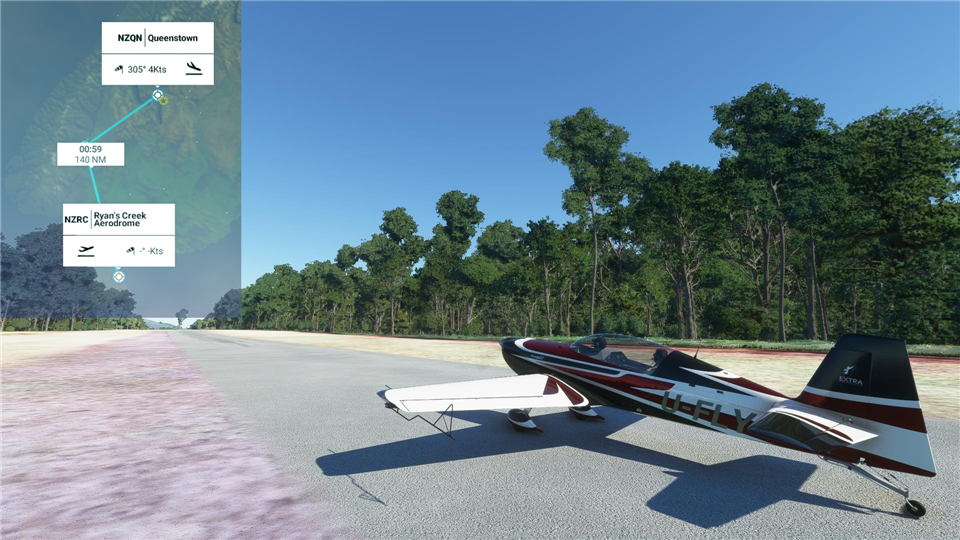
Our New Zealand adventure is almost over, and with it our rental of this amazing Extra from the U-Fly people. While I love my Pitts dearly it's just not going to be able to handle some of the long hauls we've got coming up. So with a sad heart I've started the process of trading up to one of these babies when we get back to Brisbane.
Both the Pitts and the Extra are aerobatic airplanes. You can tell a serious aerobatic airplane by the alien antenna thing on the left wing. It's actually an aerobatic sight - just a simple piece of wire that shows forty-five and ninety degree angles against the horizon so you can be really precise when that is called for. Aerobatics is considered an extreme sport, but it is only one. There are many others, and new ones are being invented all the time.
In 1979, Oxford University had a somewhat unofficial club - the Dangerous Sports Club. A member of this club, one David Kirke, had a brilliant idea for something dangerous - why not jump off the Clifton Suspension Bridge with giant rubber bands tied around your ankles? I mean, what could possibly go wrong.
The Clifton Suspension Bridge spans the Avon Gorge between Clifton and Leigh Woods in the southwest of England. It was the marvel of its day in 1864, with a span of over seven hundred feet and a clearance of two hundred forty-five feet above high tide. A person falling off the bridge with no high-tech safety equipment, rubber bands let's say, would be travelling around eighty-five miles per hour when they hit the water and they would surely be killed. At least, that is what 22 year old Sarah Ann Henley thought in 1885 when she took the plunge. It turns out that Victorian skirts make excellent parachutes, and Sarah lived into her eighties.
David Kirke, however, was not wearing a skirt. He was wearing the trademark uniform of the DSC - a morning suit (formal top hat and tails) and a bottle of champagne. So he jumped off the bridge. And into history.
Actually, this jump went off without a hitch, except for maybe being arrested. He broke his spine in three places in another stunt involving cliffs and aeroplane launchers. But for now he fades from the story.
The stunt that David perpetrated did not go unnoticed around the world, and it inspired a Kiwi to sort-of invent the sport of Bungy Jumping, or Bungee jumping as it is known in North America. Something quite similar to Bungee Jumping has been going on at the south end of Pentecost Island in Vanuatu since time began, but it was never a sport there. The women did it to get away from frisky men; the men did it ironically to prove their masculinity and get girls. Only in Queenstown, and under the expert guidance of A. J. Hackett, did the ages old method of both encouraging and discouraging nooky become something that people would pay a lot of money to do for fun.
So let's go see how many dangerous things there are for tourists to do in Queenstown.
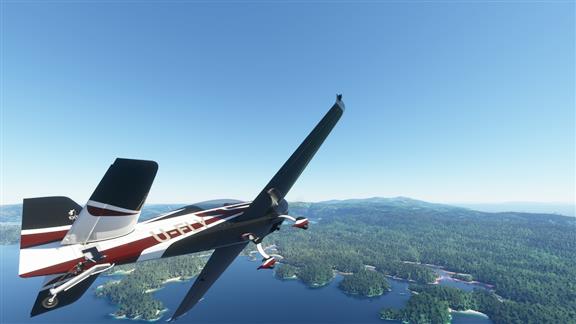 Down there somewhere is the Rakiura Great Walk, actually a two or three day overnighter. This year (depending on many factors) it's going to be done as a one day fun run. Thirty two kilometers. None of it level or paved.
Down there somewhere is the Rakiura Great Walk, actually a two or three day overnighter. This year (depending on many factors) it's going to be done as a one day fun run. Thirty two kilometers. None of it level or paved.
|
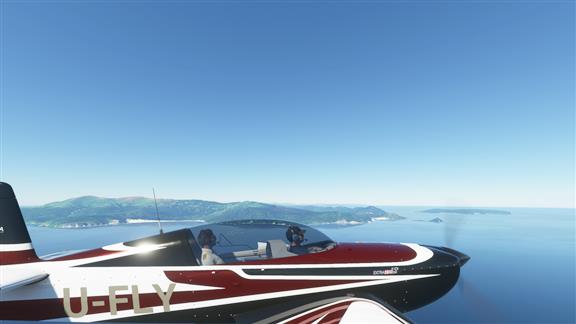 This is it for land for a bit.
This is it for land for a bit.
|
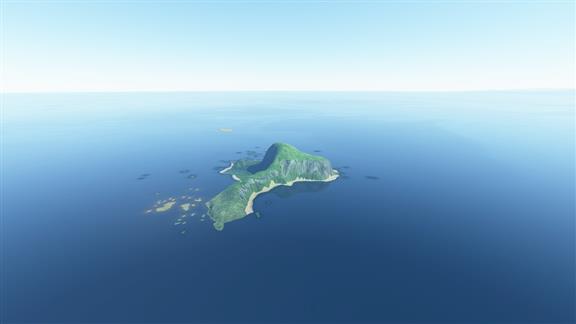 Spoke too soon. Here's Solander Island, the very tip of a somewhat larger submarine volcano, long since extinct. Home now to countless birds and countable seals.
Spoke too soon. Here's Solander Island, the very tip of a somewhat larger submarine volcano, long since extinct. Home now to countless birds and countable seals.
|
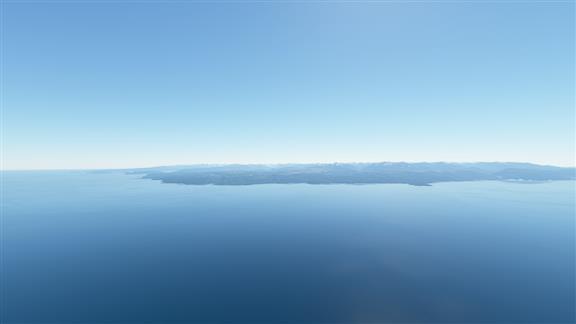 And off in the distance is Fiordland, the south-western end of the South Island.
And off in the distance is Fiordland, the south-western end of the South Island.
|
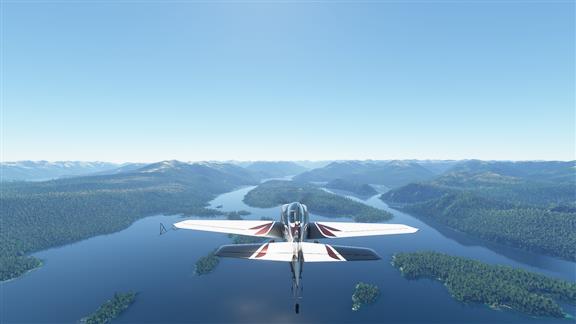 Known for its many fjords. The area was carved out by Tū-te-raki-whānoa using his adze. He started in the south and worked his way north, perfecting his technique as he went. So the northernmost fjord, Piopiotahi, known as Milford Sound to the Pākehā, is the best one and it is there that you will find the pounamu jade.
Known for its many fjords. The area was carved out by Tū-te-raki-whānoa using his adze. He started in the south and worked his way north, perfecting his technique as he went. So the northernmost fjord, Piopiotahi, known as Milford Sound to the Pākehā, is the best one and it is there that you will find the pounamu jade.The fjords of Fiordland are so rugged and inacessible that not even the Māori had any permanent settlements here. So today Fiordland remains largely untouched and it is here that you can find many indigenous flora and fauna that have disappeared from more habitable areas. |
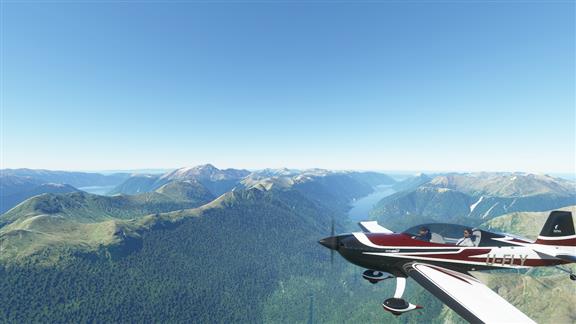 Lake Poteriteri, with Lake Hauroko up next. You can hike between the two.
Lake Poteriteri, with Lake Hauroko up next. You can hike between the two.These lakes are sometimes called fjord lakes, although eggheads disagree on whether that is a thing or not. They were gouged out by glaciers to be sure, and their brethren closer to the ocean became true fjords when they filled up with sea water. But these guys may have always been fresh water, so their status as anything fjord is in question. |
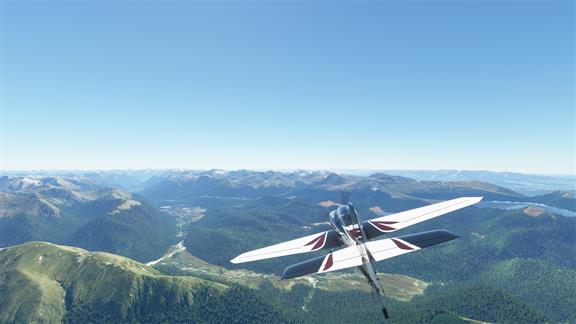 Here's a valley going our way.
Here's a valley going our way.
|
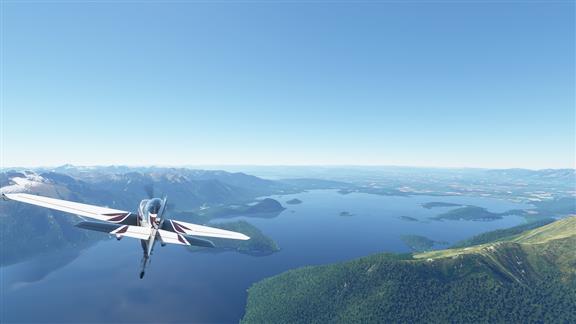 Which brings us to Lake Hauroko, New Zealand's deepest lake at 462 meters. True saltwater fjords, and freshwater fjord lakes, are typically extremely deep.
Which brings us to Lake Hauroko, New Zealand's deepest lake at 462 meters. True saltwater fjords, and freshwater fjord lakes, are typically extremely deep.
|
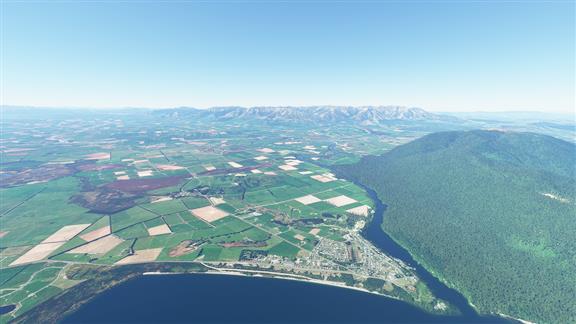 Manapouiri. Lots to do here for such a little place.
Manapouiri. Lots to do here for such a little place.
|
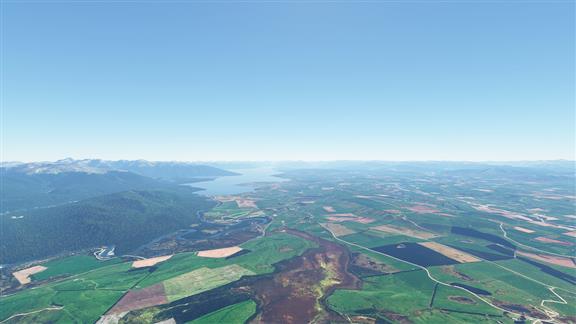 And up there is Te Anau, lake and city.
And up there is Te Anau, lake and city.
|
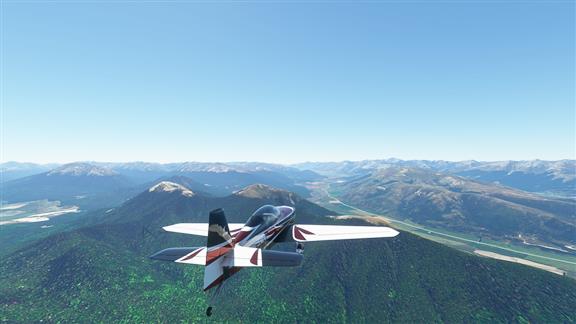 But we need to pop up over the mountains towards Queenstown. There are a lot of mountains in the South Island. The Southern Alps, as James Cook called them, run pretty much the length of the South Island and are, of course, the height of land causing the Main Divide of water catchment areas.
But we need to pop up over the mountains towards Queenstown. There are a lot of mountains in the South Island. The Southern Alps, as James Cook called them, run pretty much the length of the South Island and are, of course, the height of land causing the Main Divide of water catchment areas.In their 500 km run, the Alps have seventeen mountains that exceed 3,000 meters, the tallest of which is Mount Cook, approximately half way down the Island. We're not anywhere near there, but there are still some pretty big hills here. And they keep getting a little bit bigger every year. As the Pacific Plate pushes westward it collides with the Indo-Australian Plate which is moving north. For 45 million years now, this collision has been pushing the Alps up - an amazing 25 kilometers in the past 5 million years alone. The reason the Alps are only 3 kilometers high is due to the fact that erosion is almost keeping pace with the rise. But the Alps still manage to get around 10 mm taller every year, a rate that is about a quarter as fast as your fingernails grow. The mountains are a unique habitat, inhospitable to introduced predators such as dogs, cats and stoats. So the Alps are important habitat for species such as the Great Spotted Kiwi, the South Island Kaka and the Kea, the world's only alpine parrot. |
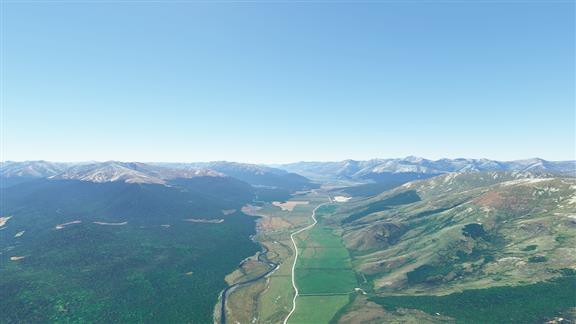 Of course, if there's a convenient valley we'll take that instead.
Of course, if there's a convenient valley we'll take that instead.
|
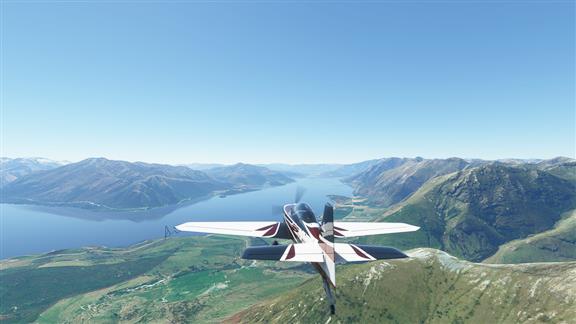 This is Lake Wakatipu, which was formed when a giant ogre, Kopu-wai, was burned while he slept. Only his heart survived, and the beating of this heart accounts for the otherwise inexplicable rise and fall, by as much as 10 cm or so, of the water level over a twenty-five minute period.
This is Lake Wakatipu, which was formed when a giant ogre, Kopu-wai, was burned while he slept. Only his heart survived, and the beating of this heart accounts for the otherwise inexplicable rise and fall, by as much as 10 cm or so, of the water level over a twenty-five minute period.
|
Lake Wakatipu looks like a lightning bolt. It has a very unique zig-zag shape, and just at the start of the zag you find Queenstown, the adventure capital of New Zealand. Diversions in this town range from wine tours and mining history to ziplining, bungee jumping, jet boating and, of course, shark rides.
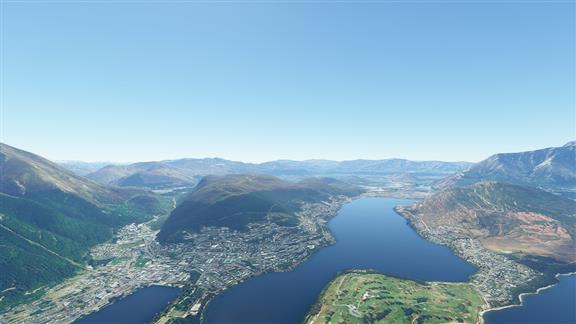 |
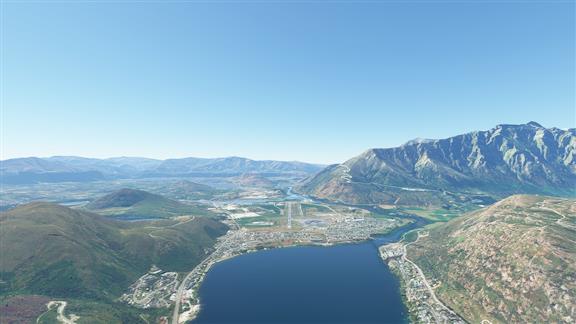 |
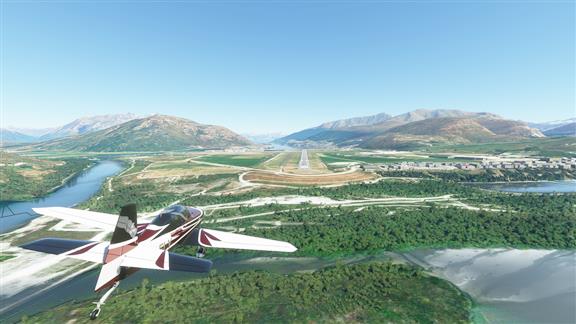 Well, that's a wrap for New Zealand. We'll be taking the red eye back to Brisbane to continue our Aussie adventure. Although there's a great deal of rain in the forecast, so maybe we'll have a bit of a layover while we get the paperwork sorted out on our new Extra.
Well, that's a wrap for New Zealand. We'll be taking the red eye back to Brisbane to continue our Aussie adventure. Although there's a great deal of rain in the forecast, so maybe we'll have a bit of a layover while we get the paperwork sorted out on our new Extra.
|